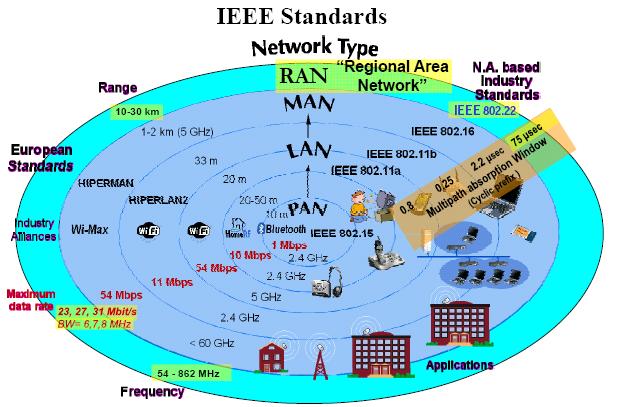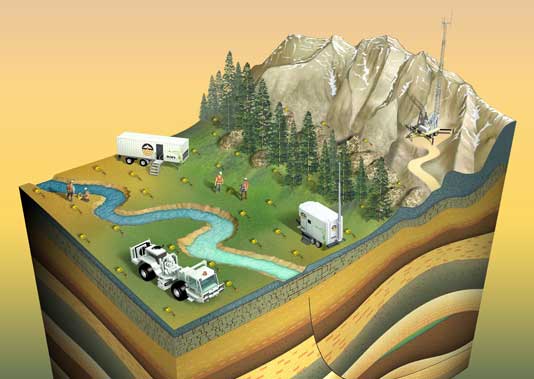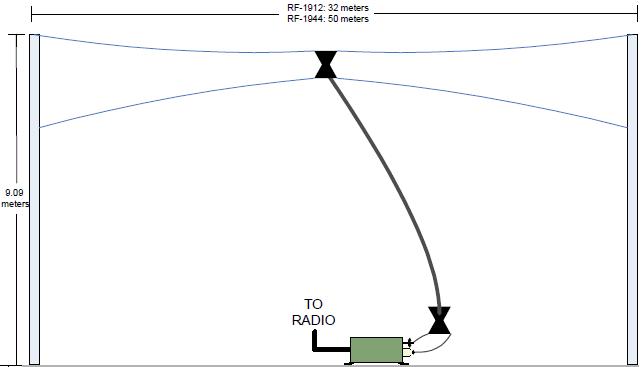Since the 2011 Tōhoku earthquake and tsunami in Japan, NTT has stepped up research on new wireless systems to aid in disaster recovery. Some of its progress is shared in several articles in the January 2018 issue of the NTT Technical Review.
Archive for the ‘Wireless’ Category
Using wireless to restore communications after a disaster
Monday, January 29th, 2018Experimental Radio Applications at the FCC
Monday, January 3rd, 2011This summarizes a selection of applications for the Experimental Radio Service received by the FCC during December 2010. These are related to FM broadcasting, Positive Train Control, TV white space, mobile satellite terminals, GSM, UMTS, through-the-wall surveillance radar, troposcatter communications, millimeter-wave propagation, flight test telemetry, Doppler weather radar, and air-to-air military radar.
FCC Takes Further Steps toward Mobile Broadband in TV Spectrum
Thursday, December 2nd, 2010On November 30, the FCC adopted a Notice of Proposed Rulemaking (NPRM) as a preliminary step toward making the current TV broadcast spectrum available for use by fixed and mobile wireless broadband services. The proposed rules would do three things: 1) make fixed and mobile wireless services co-primary with broadcasting in the FCC’s Table of Frequency Allocations, 2) create a regulatory structure giving two or more TV stations the option to share one 6 MHz channel, and 3) improve VHF TV reception through power increases and adoption of receiver antenna standards. No service rules are being proposed; they’re to come later. Congress has yet to approve incentive auction authority.
The FCC’s Spectrum Deficit Estimate
Monday, November 22nd, 2010The FCC’s National Broadband Plan (NBP) recommends that the Commission make available 500 MHz of new spectrum for wireless broadband, including 300 MHz for mobile use. In support of that recommendation, on October 21, the FCC released an FCC Omnibus Broadband Initiative technical paper: Mobile Broadband: The Benefits of Additional Spectrum. The paper concludes that mobile data demand is likely to exceed capacity in the near term and, in particular, that the spectrum deficit is likely to approach 300 MHz by 2014.
In the Transition to 4G, Voice will Stay on 3G
Friday, October 15th, 2010Most cellular operators are beginning the transition from 3G technologies to 4G LTE. That will mainly be for high-speed data and not voice, support for which will come years later. Communications engineer Jim Murphy describes some of the networking issues that make voice impractical on LTE on day one. To his comments I’d add that the preferred LTE voice solution is VoIP on the IP Multimedia System (IMS) framework, which has had slow adoption in the mobile community.
Jim’s example is from the 3GPP family of technologies, of which LTE is part. Most 3GPP2 operators, such as Verizon Wireless, are also planning a migration to LTE. They migrate from a different family of technologies, those specified in 3GPP2 and which include cdma2000 developed largely by Qualcomm. In Verizon’s transition, high-speed data on cdma2000 networks, now provided by EV-DO, will migrate to LTE. Voice will stay on cdma2000 1x for several years. That’s not a problem, because that technology keeps improving. The latest version, called cdma2000 1x Advanced, has achieved a 50x increase in voice capacity over the predecessor IS-95 system launched in 1993.
Both 3GPP and 3GPP2 3G voice feature a soft-handover (make-before-break) scheme that allows for, essentially, a circuit-switched connection. Yes, you’ll be able to run Skype and other VoIP services on 4G LTE data networks, if you want. In terms of the total user experience, however, most will prefer the seamlessness of standards-based integrated voice capability.
VoIP is the future. For 4G voice, though, it’s just great in theory at this time.
FCC Finalizes White-Space Rules
Thursday, September 23rd, 2010The FCC finalized its white-space rules today, acting on petitions for reconsideration of its earlier decisions. It issued an 88-page Second Memorandum Opinion and Order that explains its decisions and includes the final white-space rules. A much-shorter press release was also issued.
At least one FCC observer has noted an uncharacteristic level of hype in today’s announcements. The FCC calls it “super Wi-Fi,” and adds the “potential uses of this spectrum are limited only by the imagination.”
Over two years ago, Google called it “Wi-Fi on Steroids.” It was later picked up by the popular press. Not all agree; it’s “Wi-Fi on Crutches” according to one who dares to consider the realities of physics and economics.
I’ll call it “Wi-Fi on Caffeine,” at least with respect to better range and coverage — if not data rates — compared with current Wi-Fi equipment. This is partly due to operation in the UHF-TV band instead of the 2.4 GHz band. In major markets and their suburbs, there will be few or no channels available for white space use. In rural areas and other less dense areas, the technology will be a good fit with Wireless Internet Service Providers (WISPs) and other longer-distance applications.
Cellular operators would like some of the white space on a licensed basis for backhaul in rural areas. They didn’t get it today, but the FCC is actively considering it and we may hear more on that by the end of the year. No way are all these vacant channels going to be occupied by internet services in the most rural areas, so the proposal of the operators makes sense.
In IEEE 802, Working Groups 802.22 and 802.11 are working on standards that can be used by equipment in these applications; 802.22 may be the one with longer range. Working Group 802.19 is trying to facilitate coexistence between the two. Now, there are asymetric interference effects, which is causing friction between the two groups beyond the normal competition. (802.22 takes the harder interference hit.)
There will be other standards and equipment as well. The white space concept is international, but unique to each area of the world.
Equipment is not easy; it’s challenging to develop sufficiently-broadband power amplifiers and antennas, and to meet the emission mask in a cost-effective manner.
Another challenge is developing a business plan when 120 MHz of TV spectrum could be taken away under the National Broadband Plan.
Ultra-Wideband: How Regulatory and Standardization Delays Slowed a Wireless Technology
Thursday, September 2nd, 2010The FCC recently issued an order denying reconsideration petitions in its ultra-wideband (UWB) proceeding. That effectively ends the 12-year UWB rulemaking process. Mitchell Lazarus recounts how UWB became bogged down at the FCC and in a failed standardization attempt in IEEE 802.
UWB, as authorized by the FCC, operates across 3.1 to 10.6 GHz, with very low power at any one frequency; its tendency to cause or receive interference is very low.
IEEE 802 attempted to create a UWB standard in IEEE 802.15.3a but did not, as neither of two competing proposals reached the necessary voting threshold for approval. One of the competing proposals, Multi-band Orthogonal Frequency Division Multiplexing (MB-OFDM), has since seen some consumer success in Wireless USB, which is based on a platform maintained by the WiMedia Alliance; data rates are up to 480 Mbps at a range of about 10 feet.
UWB was eventually standardized in IEEE 802.15.4a, where it exists as an alternative physical-layer to standard IEEE 802.15.4-2006, a standard for very low power, low data rate devices. (The IEEE 802.15.3 family is for higher data rates with higher power consumption.) It uses what was the other competing proposal in 802.15.3a, Direct Sequence UWB (DS-UWB). This standardized form of UWB has been commercialized for asset tracking and other location services, but not yet for consumer applications.
(more…)
Experimental Radio Applications at the FCC
Saturday, August 14th, 2010This summarizes a selection of applications for the Experimental Radio Service received by the FCC during July 2010. These are related to high-frequency data, military communications, environmental data collection, synthetic aperture radar, WiMAX, sensor networks, interference-resistant communications, LTE, rail transportation, air traffic control, white space networks, and RFID.
- Harris filed an application (with supporting exhibits) for experimental license to operate on various frequencies between 3 and 15 MHz to test an experimental high-frequency wideband waveform that is intended to operate at either 12 kHz bandwidth or 24 kHz bandwidth to allow faster data transfer via high-frequency communications.
- Harris also filed an application (with supporting exhibit) for experimental license to operate on 4.94-4.99 GHz in support of development of US Army’s Warfighter Information Network: Tactical (WIN-T) and Future Combat Systems (FCS) programs. Equipment is to consist of the HNRe2 Highband Network Radio, manufactured by Harris. Harris says the HNRe2 is comprised of four elements: 1) the Baseband Processing Unit, 2) the Highband RF Unit (HRFU), 3) an Inertial Navigation Unit (INU), and a GPS device. The HRFU further consists of an upconverter, a High-Powered Amplifier (HPA), a Switched Beam Antenna (SBA), a Low-Noise Amplifier (LNA), and a downconverter). The test network will consist of five fixed nodes and one mobile node. The FCC has asked Harris to justify extended testing in a band that is primarily allocated for non-government public safety use.
- Canon U.S.A. filed an application (with supporting exhibits) for special temporary authority to operate wireless devices in support of a private technology and product exhibition from September 1, 2010 through September 3, 2010 at the Jacob K. Javits Convention Center in New York, NY. Canon is planning to import many wireless devices from Japan to be used with displays during the exhibition. These devices are not FCC compliant and not expected to be FCC compliant until after the exhibition. Frequencies requested include 315.0-315.7 MHz, 2.40-2.50 GHz, 5.18-5.67 GHz, and 61.6-62.5 GHz. This application was granted on August 11.
The Broadcast and Wireless Industries: Latest Spectrum Arguments at the FCC
Tuesday, January 5th, 2010The FCC is working under a Congressional deadline of February 17, 2010 to develop a National Broadband Plan. That work includes looking for additional spectrum for wireless broadband services.
On December 2, 2009, the FCC issued a Public Notice asking for more comment on spectrum licensed to broadcast TV stations, and on market-based mechanisms that would encourage broadcasters to make spectrum available for wireless.
TV broadcasters generally like their spectrum as it is. They argue that over-the-air TV is a public service. It is the only source of video programming for some. A large investment was made in the recent DTV transition. They are working on advanced technologies including Mobile DTV and other content delivery platforms. Multicasting provides greater choice in programming without the need to subscribe to a cable or satellite service.
(more…)



